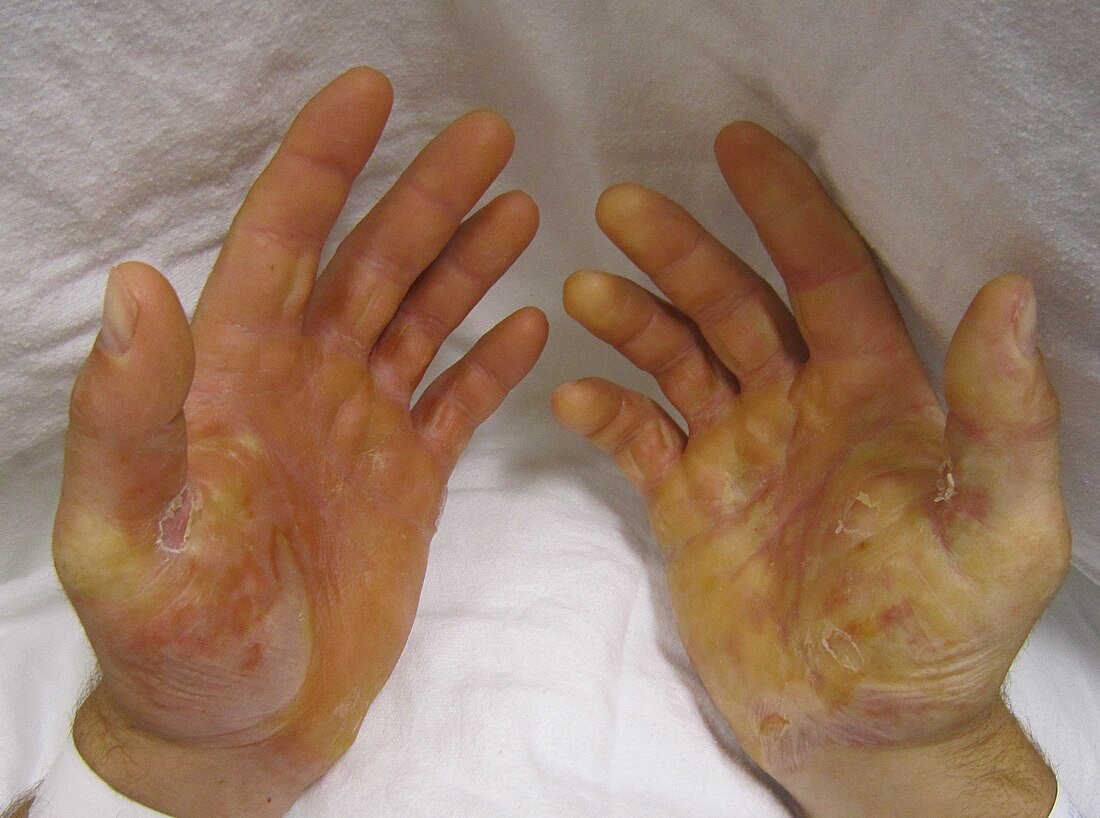Top Qs
Timeline
Chat
Perspective
Epidermolysis bullosa simplex
Medical condition From Wikipedia, the free encyclopedia
Remove ads
Epidermolysis bullosa simplex (EBS) is a disorder resulting from mutations in the genes encoding keratin 5 or keratin 14.[1]: 598 [2] It is one of the major forms of epidermolysis bullosa, a group of genetic conditions that cause the skin to be very fragile and to blister easily.[3]
Remove ads
Signs and symptoms
EBS causes blister formation at the dermal-epidermal junction.[4] The skin blisters easily, even from very minor friction and rubbing.
Cause
Epidermolysis bullosa simplex is caused by genetic mutations that prevent the proper formation of protein structures in the skin’s epidermis. The proteins of the outer epidermis do not bond properly with those of the inner dermis layer (dermal-epidermal junction). The affected genes, KRT5 and the KRT14, which are responsible for the creation of keratin 5 and keratin 14 proteins respectively, are tied to the four major types of epidermolysis bullosa simplex. However, a small number of epidermolysis bullosa simplex patients do not have mutations in their KRT5 and KRT14 genes. Mutations in the PLEC gene are also being researched, specifically in the gene’s role in the Ogna form of epidermolysis bullosa simplex. The PLEC gene is responsible for the formation of plectin, another skin protein that attaches the epidermis to the skin’s deeper layers.[5]
Remove ads
Diagnosis
Summarize
Perspective
Classification
Epidermolysis bullosa simplex may be divided into multiple types:
Remove ads
Management
- No cure for EB
- Treat symptoms
- Protect skin, stop blister formation, promote healing
- Prevent complications
- Necessary treatment: use oral and topical steroid for healing and prevent complication
- Maintain cool environment, avoid overheating and decreases friction
See also
References
Further reading
External links
Wikiwand - on
Seamless Wikipedia browsing. On steroids.
Remove ads

